
Greater Queens Podiatry, PLLC
 (718) 229-0222
(718) 229-0222
 (718) 229-0222
(718) 229-0222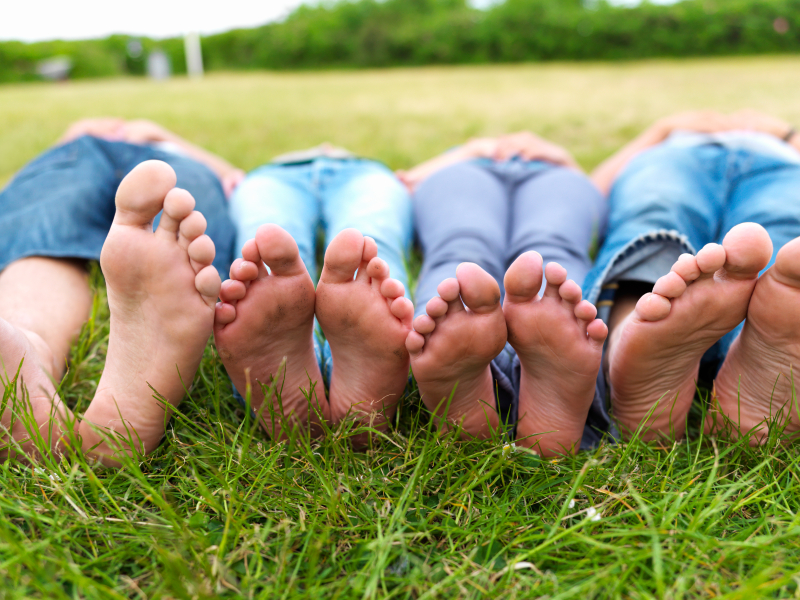 Hyperhidrosis is the medical term for excessive sweating. Although hyperhidrosis only affects 3% of the global population, it is still viewed as a serious health condition. People who suffer from the condition are often self-conscious, anxious and depressed. Hyperhidrosis usually affects the hands, feet, and forehead of people who have it. Those with hyperhidrosis know that there is a strong body odor that is caused by the condition. It is important to wash every day and shave under your arms. Bacteria and moisture can easily become trapped in hair so it is recommended that you shave it off.
Hyperhidrosis is the medical term for excessive sweating. Although hyperhidrosis only affects 3% of the global population, it is still viewed as a serious health condition. People who suffer from the condition are often self-conscious, anxious and depressed. Hyperhidrosis usually affects the hands, feet, and forehead of people who have it. Those with hyperhidrosis know that there is a strong body odor that is caused by the condition. It is important to wash every day and shave under your arms. Bacteria and moisture can easily become trapped in hair so it is recommended that you shave it off.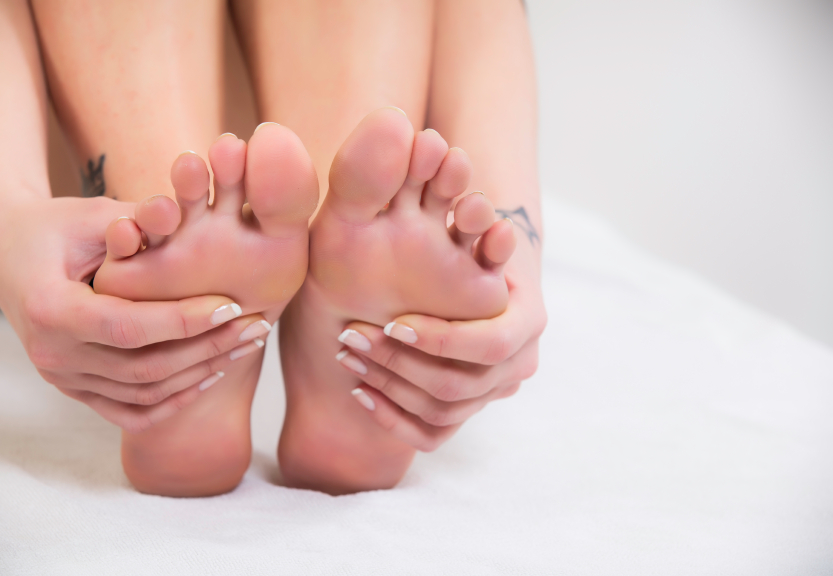 Summer is a time when people like to show off their feet. Nevertheless, you should make sure your feet are healthy before you wear flip flops and other footwear that expose your toes. Corns are hard, rounded calluses that can instantly make your feet look unattractive. Corns can be very painful when pressure is applied to them by wearing footwear. Soaking your feet in apple cider vinegar will help soften your skin and get rid of corns on your feet. You should rub a dab of castor oil on your corns after soaking your feet, in order to help get rid of them.
Summer is a time when people like to show off their feet. Nevertheless, you should make sure your feet are healthy before you wear flip flops and other footwear that expose your toes. Corns are hard, rounded calluses that can instantly make your feet look unattractive. Corns can be very painful when pressure is applied to them by wearing footwear. Soaking your feet in apple cider vinegar will help soften your skin and get rid of corns on your feet. You should rub a dab of castor oil on your corns after soaking your feet, in order to help get rid of them.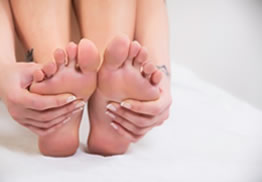 A heel spur is an extra growth of bone that is caused as a result of irritation where the tendon attaches to the bone. Heel spurs often occur toward the inside or front of your heel. Many people think that heel spurs are the source of their heel pain, however this isn’t always the case. It is likely that these people have had the spur long before they experienced pain in their heel. If you have pain in your heel, consult your podiatrist for treatment.
A heel spur is an extra growth of bone that is caused as a result of irritation where the tendon attaches to the bone. Heel spurs often occur toward the inside or front of your heel. Many people think that heel spurs are the source of their heel pain, however this isn’t always the case. It is likely that these people have had the spur long before they experienced pain in their heel. If you have pain in your heel, consult your podiatrist for treatment.
Heel spurs can be incredibly painful, and sometimes might make you unable to participate in physical activities. To get medical care for your heel spurs, contact Dr. Nicholas Megdanis from Greater Queens Podiatry PLLC. Our doctor will do everything possible to treat your condition.
Heels Spurs
Heel spurs are formed by calcium deposits on the back of the foot where the heel is. This can also be a cause from small fragments of bone breaking off one section of the foot, attaching it to the back of the foot. Heel spurs can also be bone growth on the back of the foot. Bone may grow in the direction of the arch of the foot.
Older individuals usually suffer from heel spurs. Pain sometimes intensifies with age. Heel spurs are known to cause a substantial amount of pain. One of the main associations spurs are related to is plantar fasciitis.
Pain
The pain associated with spurs is often times because of weight placed on the feet. When someone is walking their entire weight is concentrated on the feet. Bone spurs then have the tendency to poke and affect other boners and tissues around the foot. As the pain continues the feet will become tender and sensitive over time.
Treatments
There are many ways to treat heel spurs. If one is suffering from heel spurs in conjunction with pain there are several methods for healing. Medicines, surgery, and herbal care are some options.
For more information about Heel Spurs, follow the link below.
If you have any questions feel free to contact our offices in Bayside, New York. We offer the latest in diagnostic and treatment technology to meet your needs.
Heel spurs most commonly result when calcium deposits on the back of the foot where the heel is. They may also be the result of small fragments of bone breaking off ofone section of the foot and attaching to the back of the foot. Heel spurs can also be bone growth on the back of the foot. When this is the case, the bone growth tends to grow in the direction of the arch of the foot.
Heel spurs are most commonly diagnosed in older individuals. Younger individuals also suffer from heel spurs, but the pain associated with the condition usually intensifies in aging. Heel spurs have the tendencyto inflict a great deal of pain. The heel spur itself, however, is not always the cause of the pain.Heel spurs are often associated with plantar fasciitis.
The pain that is associated with heel spurs can be traced to the placing of weight on the feet. As the individual stands or walks, their weight is placed on the feet, causing the heel spur to press on and poke the other bones and tissues in the feet. This may result in severe pain. As the condition continues to persist the tissues in the feet will become tender and overly sensitive.
If you or someone you know is suffering from heel spurs and their related pain, there are a number of treatments to look to. These treatments range from medicines, surgery, and herbal treatments. One of the simplest ways to ease the pain and discomfort of heel pain is to use special foot supports. These insoles are placed directly in the individual's shoes. They relieve the pain and tension that is placed on the foot by offering a soft gel pad for the weight to be evenly distributed without causing pain.
There are also a number of exercises that some believe may relieve or actually reverse heel spur growth and stop the pain. One exercise has the ball of the foot against the wall while balance is maintained on the heel of the foot. The individual then shifts their weight towards the wall, causing a rubbing of the heel spur. Other exercises and stretches may also be performed that can help loosen and relax muscles and tendons in the feet, relieving pain. Applying ice packs and taking anti-inflammatory medication may also help. Night splints may be worn while sleeping to keep the foot stretched out, which may make the foot less painful in the morning.
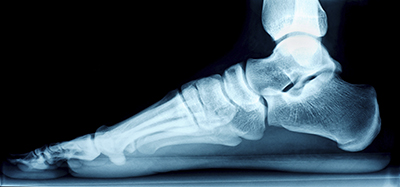 Olympic swimmer Nathan Adrian admitted that he has flat feet. Although flat feet may be problematic for athletes who are involved in land sports, they are ideal for swimmers. Adrian states that he makes a full footprint when he steps onto the cement after swimming, due to his flat feet. He claims that he didn’t choose swimming, but swimming chose him. His very flat feet and flexible shoulders were meant to be in the water.
Olympic swimmer Nathan Adrian admitted that he has flat feet. Although flat feet may be problematic for athletes who are involved in land sports, they are ideal for swimmers. Adrian states that he makes a full footprint when he steps onto the cement after swimming, due to his flat feet. He claims that he didn’t choose swimming, but swimming chose him. His very flat feet and flexible shoulders were meant to be in the water.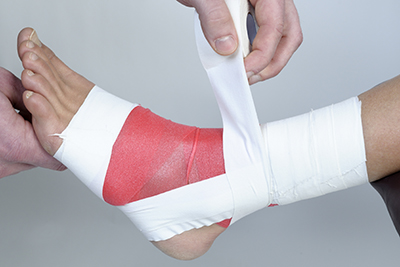 England’s Jack Butland broke his ankle during a game he played against Germany in March. Unfortunately for Butland, the injury put an end to his season. He is hoping to get the green light to resume training sometime in the near future.
England’s Jack Butland broke his ankle during a game he played against Germany in March. Unfortunately for Butland, the injury put an end to his season. He is hoping to get the green light to resume training sometime in the near future.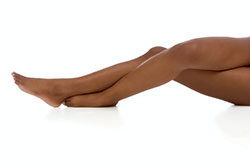 There are many ways for you to help your feet stay healthy every day. One of them is to make sure your feet are always dry. You should also wear shower shoes while using a public shower in order to prevent fungus. Another way to maintain healthy feet is to avoid wearing narrow or high heeled shoes; these types of shoes force your feet into unnatural positions which can result in bunions or blisters.
There are many ways for you to help your feet stay healthy every day. One of them is to make sure your feet are always dry. You should also wear shower shoes while using a public shower in order to prevent fungus. Another way to maintain healthy feet is to avoid wearing narrow or high heeled shoes; these types of shoes force your feet into unnatural positions which can result in bunions or blisters.
Every day foot care is very important, especially for those that are lacking the proper foot care resources. For more information about everyday foot care, contact Dr. Nicholas Megdanis from Greater Queens Podiatry PLLC. Our doctor will assist you with all of your podiatric concerns.
Every Day Foot Care
Often, people take care of their bodies, face and hair more so than they do for their feet. But the feet are a very important aspect of our bodies, and one that we should pay more attention to. After all, without our feet, we would not be able to perform most daily tasks. It is best to check your feet regularly to make sure there are no new bruises or cuts that you may not have noticed before, for example.
For dry feet, moisturizer can easily be a remedy and can be applied as often as necessary to the affected areas. Wearing shoes that fit well can also help you maintain good foot health, as well as making it easier to walk and do daily activities without the stress or pain of ill-fitting shoes, high heels, or even flip flops.
Also, wearing clean socks with closed shoes is important to ensure that sweat and bacteria do not accumulate within the shoe. Clean socks help to prevent athlete’s foot, fungi problems, bad odors, and can absorb sweat.
If you have any questions please feel free to contact our office located in Bayside, New York. We offer the newest diagnostic and treatment technologies for all your foot and ankle needs.
Read more about Everyday Foot Care
| Bayside Office 4401 Francis Lewis Blvd Suite L3B Bayside, NY 11361 Phone: (718) 229-0222 Fax: (718) 717-0275 | Monday: 9:30am - 7pm |
E-mail us with any questions